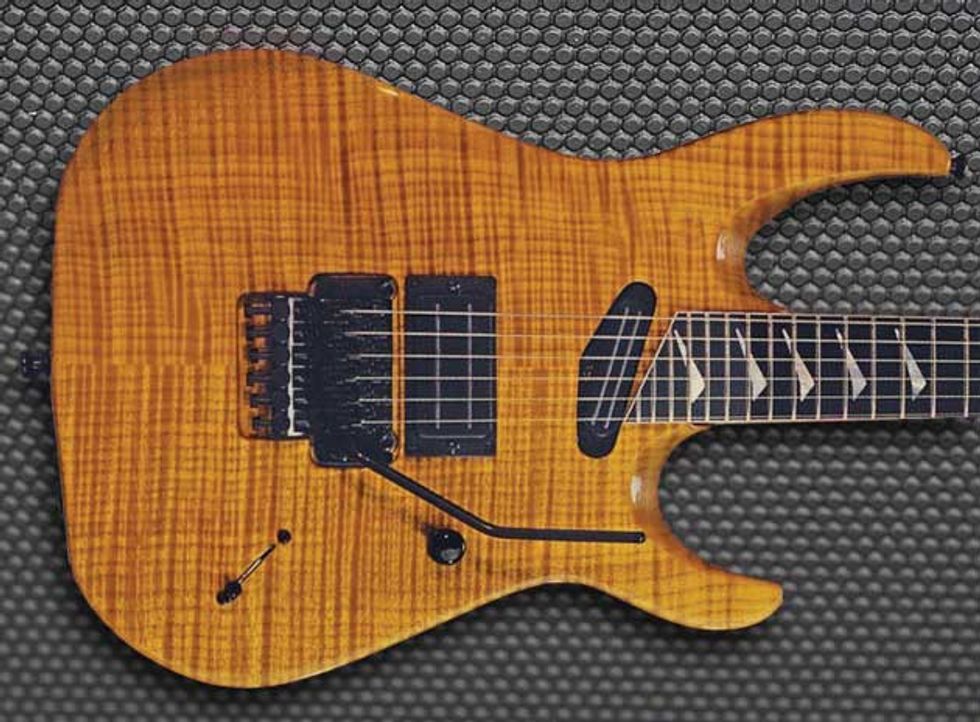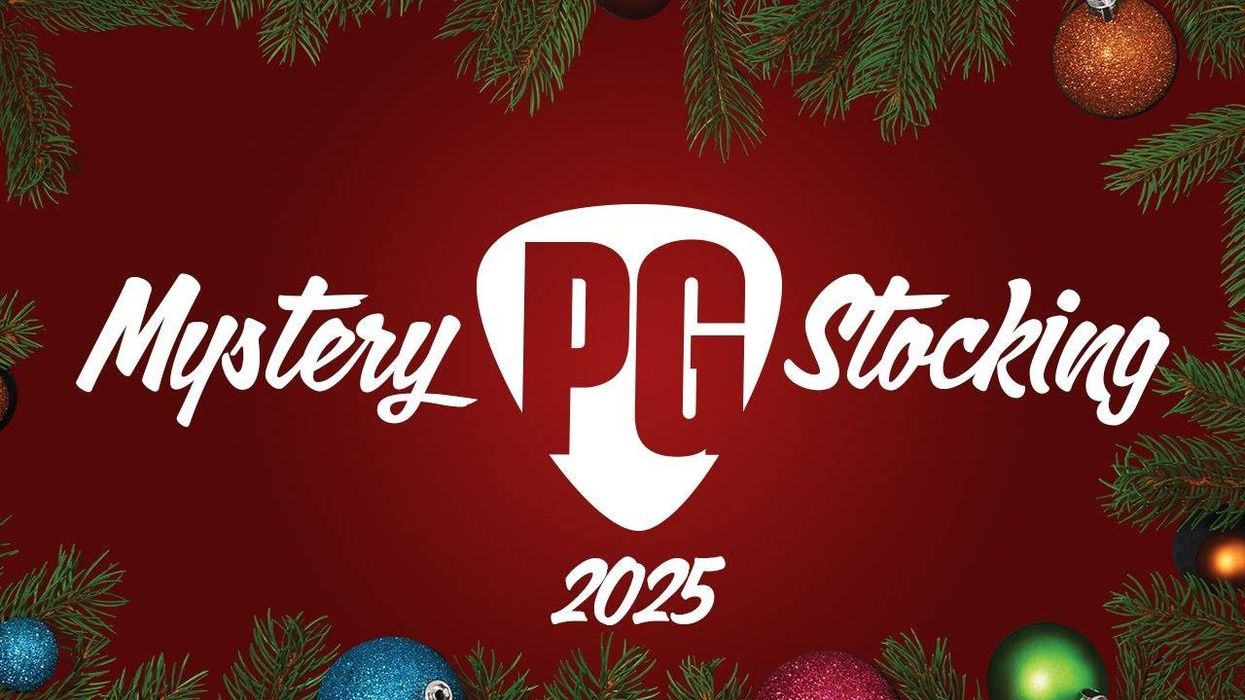Guitar models are designed and manufactured for different reasons. I’ve written about the marketing and business side of things, and I’ve also touched on the idea of solving an actual problem or satisfying a musician’s needs (imagine that!). There are, however, times when all the planets align and both of these reasons collide with a third compelling force: competitive nature. Builders are not without a sense of rivalry and a willingness to go head-to-head in the arms race of product design. Such was the case for the Hamer Californian model of 1988.
As the 1980s moved into the shred era, guitar makers began to push the envelope of design to accommodate the enhanced playing (and stage costume) styles of the day. For me it began as early as my 1979 design for the Hamer Prototype model, and later with the 1982 Phantom model—the precursors to the “super strat” phenomenon.
As weird and wonderful as those guitars were then, today they seem a little incomplete to me. That said, I’m particularly proud of my Californian design whose name was a direct reference to my friend Grover Jackson in the Golden State. I’ve long admired Grover’s work, and I think his Soloist can be counted among the most iconic of guitars. Since Jackson had thrown down the gauntlet, I wanted to create a kick-ass shred machine that would prove that we Chicago boys could shake the earth in our own way. My intention was to fashion a “super strat” that looked as though Ferrari had sculpted it.
To provide the Cali a more angular appearance than the traditional form, I downsized the body and employed radical contours and beveling in the cutaway areas. This improved access to higher fingerings and gave the horns an aggressive appearance.
Probably the most recognizable feature was the addition of extra frets at the end of an angled fretboard. Uli Jon Roth created the Sky guitar with 30 frets, but not only was it difficult for Roth to play, it was impossible for the average shredder to play. The Californian, in contrast, clocked in at a more useable 27 frets. This was six more than the average Strat and three more than the (then) current crop of 24-fret shredders. And the scalloped cutaways allowed access to the high-fret G that could be bent up a step—giving shredders a new high A. Oh joy.
Parallel Axis pickups from Seymour Duncan—which were new at the time—or active EMGs were used to ensure proper buzz-saw tone. In a nod to the wishes of the sales staff, massive pickup output was very important for standing out on Saturday mornings at Guitar Center, where products vied for dominance.
In EVH fashion, a humbucker was placed in the bridge position while a single-coil was used at the neck. The neck pickup was basically there to provide some additional clean tones when used with the bridge pickup—so essential for power-ballad intros and bridges. I placed it on a rakish angle that complimented the end of the fretboard. This was primarily for styling purposes, since it would probably have sounded better angled the other way. But I figured that someone wearing leather underneath the searing heat of 500 PAR lights could put up with a little compromise for the show.
The addition of “boomerang” inlays was the final touch that brought the entire guitar together by mimicking the repeating angles of the headstock, fretboard, pickup, and cutaways. The locking system from Floyd Rose was the bridge of choice, but string-through and Tune-o-matic variants were also made.
Another innovation I’m proud of is the location of the output jack. A Strat-style jack plate was placed on the edge of the guitar’s butt end just below the strap button and angled upward. This setup—known internally as the “Californian Jack”—was perfect for a wireless system, since the cable could come straight down the guitar strap and into the jack. It also worked great for looping a cable under the strap—an elegant solution to an age-old problem.
Sonically, the Cali was in a similar arena to many guitars that employed the same hardware of the day, which is to say that it could compete with most shred guitars. They tended to be sharp and direct sounding, which worked well with the outboard gear of the era. Cutting through plenty of effects-loop chicanery was the name of the game.
The Californian could be special ordered in almost every combination imaginable, including a bolt-on, set-neck, and even a double-neck version. At a time when highly figured wood was not enjoying mainstream popularity, some of the most eye-catching Californians featured solid flame-maple bodies—a clash of aesthetics that I enjoyed creating.
The Californian enjoys a rabid cult following and remains one of my favorite designs. The overall balance is excellent and the cosmetic and functional aspects of the guitar are completely in harmony. The additional frets are clearly the Cali’s calling card, but the build quality and design integration details are its true legacy. The name Californian was the exclamation point on a very complete sentence.
Will the Cali ever occupy a place in a hall of fame for guitars? I doubt it, but only time will tell.















![Rig Rundown: AFI [2025]](https://www.premierguitar.com/media-library/youtube.jpg?id=62064741&width=1245&height=700&quality=70&coordinates=0%2C0%2C0%2C0)












 Shop Scott's Rig
Shop Scott's Rig